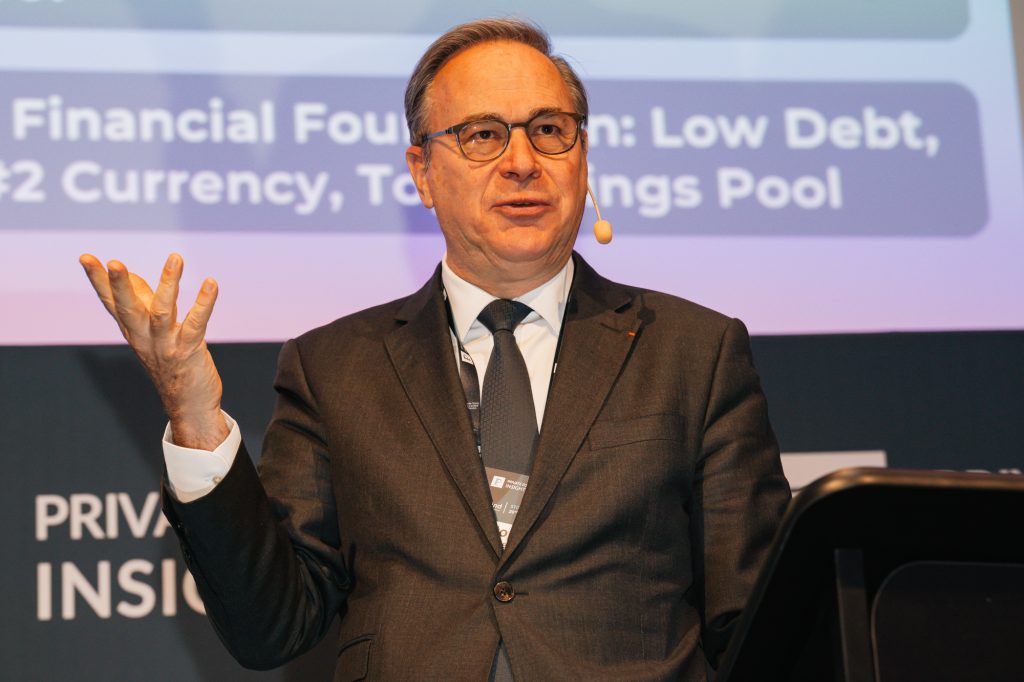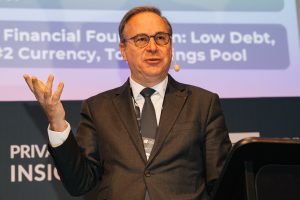Europe doesn’t lack capital, it lacks “risk culture”, says Eurazeo Co-CEO


Europe has all the right ingredients for stronger growth: skilled entrepreneurs, deep savings and a robust mid-market. Yet somehow, it struggles to convert them into momentum.
Eurazeo Co-CEO Christophe Bavière used his keynote at Nordics Private Equity Conference to challenge the myth that the continent’s economic underperformance is caused by a lack of resources or talent. He argued that the missing link is a willingness to take risk and invest in the companies that can scale.
The Draghi report estimates that Europe’s annual financing gap stands at 4% of GDP, yet one third of European savings, approximately 11.5 trillion euros, sits idle in low-yield cash deposits and heavily regulated products. Bavière argued that this shows a systemic failure of capital allocation. The continent’s savings culture has become a structural impediment to its competitiveness.
Private equity is one of the few mechanisms capable of correcting that imbalance. But the European investment environment has historically discouraged risk-taking, even as its buyout funds outperform. Bavière noted that European buyout funds return capital faster than those in the United States and deliver higher internal rates of return with less leverage. Despite that track record, he said Europe still suffers from “a missing risk culture.”
The result is a market that remains underserved even as its fundamentals strengthen. Nowhere is this clearer than in the depth of Europe’s mid-market. With more than 35,000 mid-sized companies, Europe possesses a uniquely dense foundation of local leaders with strong cash generation, sector expertise, and room for consolidation. In Bavière’s view, this is not only Europe’s greatest strength but also its most overlooked opportunity.
He argued that the past decade has fundamentally changed the quality and ambition of the entrepreneurs operating in this segment. Where it was once difficult to find serial founders, today the challenge is capital deployment. Europe now produces globally minded, technically trained entrepreneurs from day one, he said, yet the continent still fails to invest enough of its own savings into its own companies.
This dynamic is rapidly transforming the buy-and-build model. Roll-ups that once took years now happen with increasing frequency because the managerial talent has caught up with the strategy. Bavière recalled that when Eurazeo began investing, helping a French company acquire a single European competitor over five years was viewed as progressive. Today, well-supported founders in the mid-market can execute acquisitions every six months.
Eurazeo’s experience with DORC, a specialist in eye-surgery medical devices, illustrates the point. The company dominated a niche segment in Europe but had limited room to expand locally. Eurazeo helped DORC enter the United States and China, more than doubling revenue. When the company was ultimately sold to ZEISS, Eurazeo presented evidence that expansion into India was likely to replicate the same growth trajectory.
For Bavière, this combination of niche leadership and disciplined innovation is Europe’s competitive advantage. He emphasised that artificial intelligence is not confined to digital-native businesses; even mature industrial and medical-technology companies can use it to lift productivity. He also argued that ESG and climate adaptation, when treated as operational levers rather than compliance burdens, improve the resilience and long-term performance of portfolio companies.
He was equally direct about Europe’s regulatory burden. While the continent has a unified market in theory, the practical reality is fragmentation. A single digital business may face more than 200 regulators across Europe. Such complexity discourages scaling altogether.
Yet Bavière was not entirely pessimistic. Europe’s challenge, he argued, is not a shortage of opportunities but a shortage of capital willing and able to back them. Capital-market union will not be achieved through public-market reform alone. It will require a unified private equity, private debt, and infrastructure market in which European savings can be deployed into European growth.
He was unequivocal about the inequity of the current system. Wealthy families and institutions already access high-performing private markets. Ordinary savers generally cannot. “It’s not fair,” he said, pointing out that regulation prevents European savings from flowing into Europe’s own growth engines.
The final message was clear: Europe’s potential is deeply rooted in the companies already operating across the continent. Further unlocking that potential will require capital that is willing to take risk and a regulatory framework capable of rewarding ambition rather than punishing it.
by Andreea Melinti
If you think we missed any important news, please do not hesitate to contact us at news@pe-insights.com.
Can`t stop reading? Read more.




